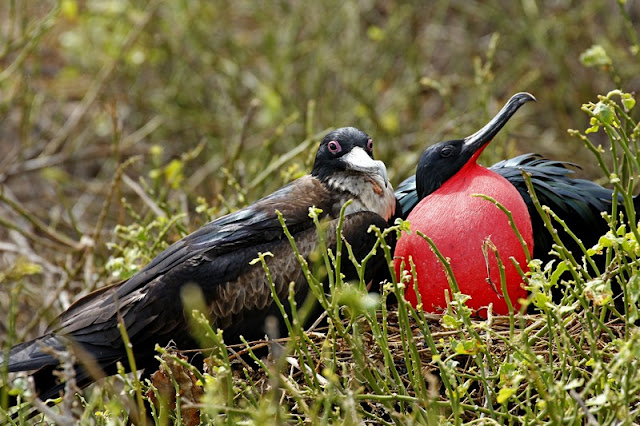Day 7: Genovesa Island; The Cliff, Darwin's Bay
When I got up on the morning of the last proper day of our time in the Galapagos I found most of my shipmates, including Ben, peering intently over the stern. Clutching my coffee I joined them to find out what was going on.
There were three sharks circling under the yacht; one big Galapagos shark and two smaller white tipped reef sharks. In between passes I looked around at the harbour we'd sailed into; another collapsed crater, filled with so many seabirds flying to and fro, some more sea lions on the beach . . . where else in the world could you wake up to this?
The panga ride across the bay drew us closer to the cliffs that plunged straight into the sea. The landing steps had a fur sea lion sleeping on them; he did not look particularly impressed to lose his comfortable spot in the sun.
Once off the panga we climbed a short section of stairs to the top of the cliffs. On the wide, flat cliff top nesting seabirds abounded. There were frigate birds and Red footed boobies nesting in the trees and Nazca boobies nesting on the ground, storm petrels and night herons.
Nazca booby and chick
To everyone's delight a Short eared Owl was spotted just off the path. Being nocturnal he didn't look at his most alert . . .
Red footed booby and chick
This centipede was very large, approximately 30cm.
Then a little further on - another owl.
It was a fabulous landing, the abundance of birds was phenomenal.
Fabricio had mentioned that we might be able to see hammerhead sharks during the snorkel, but unfortunately the swell was going the wrong way and we had to snorkel on the opposite side of the bay. This time there was a fur sea lion lounging in the water; he allowed me to swim up very close, but could not be enticed to play.
The landing at Darwin's Bay was the last of the trip and we were not disappointed. On the beach there were six sea lions, from pups to a large male.
Frigate birds soaring
Swallow tailed gulls
Red footed booby
Female and male frigate birds
We had time for a swim and then some relaxing on the beach. Due to the weather it was going to be a long and bumpy crossing back to Baltra Island and the airport in the morning, so we savoured our last moments of calm.
The Galapagos Islands are truly extraordinary; like nowhere else on earth.

























































